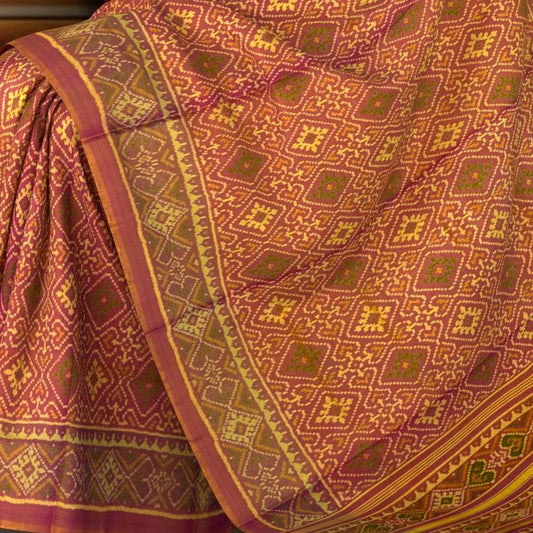Navratri Day 4: Chaturthi – Worshiping Goddess Kushmanda
On the fourth day of Navratri, known as Chaturthi, devotees honor Goddess Kushmanda, one of the nine forms of Goddess Durga. Kushmanda is revered as the creator of the universe, and her name is derived from three words: "Ku," meaning "little"; "Ushma," meaning "warmth"; and "Anda," meaning "cosmic egg." Together, they signify her power to generate the universe with her radiant energy. According to Hindu mythology, before the existence of the cosmos, there was nothing but darkness, and it was Goddess Kushmanda’s radiant smile that brought light and creation into the universe. She is thus known as the cosmic creator, the one who brings warmth, energy, and life to the universe.
Goddess Kushmanda is depicted with eight arms, holding weapons, a rosary, a lotus, and a jar of nectar. She rides a lion, symbolizing strength and courage, and her gentle yet powerful smile radiates the energy that sustains the universe. Worshiping her is believed to enhance one’s vitality, health, and mental clarity. She is the goddess who removes the darkness of ignorance and grants wisdom and spiritual insight to her devotees.

Symbolism of Goddess Kushmanda
The story of Goddess Kushmanda reflects the fundamental Hindu belief in creation, preservation, and destruction as a cycle. As the creator, she stands at the beginning of the universe’s existence, embodying the life-giving energy that sustains all. Her eight arms represent the eight directions, symbolizing her all-encompassing presence in the universe. In each of her hands, she holds symbolic items that represent different aspects of life and spirituality, including a bow and arrow (representing the destruction of evil), a lotus (representing purity and devotion), a kamandalu (a pot of sacred water representing abundance and blessings), and a rosary (symbolizing concentration and meditation).
The lion she rides further symbolizes strength, courage, and dominance over obstacles. Through her divine energy, she gives life to all living beings and maintains the balance of creation. Devotees believe that by worshiping Kushmanda, they can gain clarity, overcome challenges, and strengthen their spiritual connection with the divine.
The Importance of Green on Chaturthi
Each day of Navratri is associated with a specific color that holds particular significance. On the fourth day, wearing green is considered auspicious. Green is the color of life, growth, and nature, and it symbolizes harmony and balance. It reflects the energy of Goddess Kushmanda, who, with her life-giving smile, brings growth, abundance, and prosperity into the universe.
Wearing green on Chaturthi is believed to invoke the energies of creation and renewal. It also connects devotees to the life force of nature, encouraging a sense of peace, balance, and grounding. As you adorn yourself in green, you embrace the vitality and renewal that Goddess Kushmanda embodies.
Rituals and Fasting on Day 4
The day begins with an early morning ritual of cleansing and purification, followed by prayers to Goddess Kushmanda. Devotees light lamps and offer flowers, fruits, and sweets to the goddess as part of the Navratri puja. Many devotees observe fasting, dedicating the day to self-discipline and spiritual reflection. The fast is often broken in the evening with simple, sattvic (pure) food, such as fruits, milk, and light vegetarian meals, symbolizing purity and devotion.
In temples and homes across India, the Kushmanda mantra is recited to invoke the goddess’s blessings. Chanting her mantras and singing devotional songs are believed to enhance spiritual well-being and help devotees connect with the goddess’s divine energy. One popular mantra dedicated to Kushmanda is:
"Om Devi Kushmandayai Namah."
This mantra is chanted to seek the goddess’s blessings for health, prosperity, and the removal of darkness from one's life.
Significance of Worshiping Goddess Kushmanda
Worshiping Goddess Kushmanda is especially significant for those seeking mental clarity, health, and prosperity. She is the goddess who brings light to darkness, making her an embodiment of knowledge, wisdom, and enlightenment. Devotees believe that by honoring her on Chaturthi, they can gain a deeper understanding of their purpose in life and strengthen their connection with the divine.
Goddess Kushmanda also represents the sun’s energy, and as such, she is closely associated with the solar plexus chakra (Manipura). This chakra governs personal power, self-esteem, and the sense of one’s identity. By meditating on Goddess Kushmanda, devotees aim to balance this chakra, enhancing their sense of confidence, willpower, and personal strength.
Additionally, worshiping Kushmanda is believed to bring peace, prosperity, and good health to the family. It is said that she removes all forms of negativity and darkness from her devotees’ lives, helping them navigate challenges with a sense of calm and assurance.
Celebrating Navratri with Sustainable Fashion
Navratri is not just a time for spiritual reflection; it is also an opportunity to celebrate India’s rich cultural heritage, especially through fashion. During this festival, wearing traditional garments made from handwoven, sustainable fabrics enhances the festive experience by connecting us to our cultural roots.
Sudeshi Weaving’s Puja Collection offers a carefully curated selection of sarees, dupattas, and garments that reflect the beauty and elegance of Indian craftsmanship. Each piece in the collection is crafted by skilled artisans using traditional handloom techniques, ensuring that the garments are both eco-friendly and rooted in Indian heritage.
The Puja Collection focuses on fabrics like cotton, khadi, and silk, which are known for their purity and comfort. These fabrics are ideal for the serene, spiritual atmosphere of Navratri, allowing devotees to feel comfortable while honoring the goddess. By choosing garments from the Puja Collection, you not only enhance your spiritual connection with the festival but also support local artisans and India’s handloom industry.
Empowering Communities Through Fashion
Just as Navratri celebrates the triumph of good over evil, supporting sustainable fashion empowers local communities. Sudeshi Weaving is committed to preserving traditional Indian weaving techniques that have been passed down through generations. By wearing handwoven garments, you contribute to the livelihoods of artisans and help preserve India’s rich textile heritage.

As you celebrate Chaturthi and honor Goddess Kushmanda, let your attire reflect the spirit of renewal and creation. Choose sustainable, handwoven outfits that not only enhance your festive experience but also make a positive impact on local communities. Through conscious fashion choices, you embody the values of self-reliance, sustainability, and cultural preservation—values that resonate deeply with the spirit of Navratri.
For more details on the Puja Collection, [CLICK HERE]







Leave a comment
Please note, comments need to be approved before they are published.